Many products are created each year to make the world more accessible for people with disabilities, but we don’t always hear about the latest advancements. Here’s a look at just some of the tech products that were developed to create a more accessible world:
GyroGlove: Wearable Tech of the Future
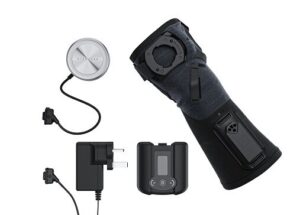 The winner of numerous innovative technology awards, GyroGear has created what is now the world’s most advanced hand tremor stabilizer: the GyroGlove. Utilizing a high-performance mechanical gyroscope, the GyroGlove is a wearable device designed to steady the shaking caused by essential tremors, Parkinson’s disease and similar conditions. This allows those who previously couldn’t or had trouble using their hands due to trembling to regain their independence and utilize them without interruption to eat, write, perform chores, play an instrument, garden and much more. The device has won numerous innovation awards with CES 2024—a top technology convention and has been used to help people of all ages and abilities improve their mobility. Photo: GYROGEAR
The winner of numerous innovative technology awards, GyroGear has created what is now the world’s most advanced hand tremor stabilizer: the GyroGlove. Utilizing a high-performance mechanical gyroscope, the GyroGlove is a wearable device designed to steady the shaking caused by essential tremors, Parkinson’s disease and similar conditions. This allows those who previously couldn’t or had trouble using their hands due to trembling to regain their independence and utilize them without interruption to eat, write, perform chores, play an instrument, garden and much more. The device has won numerous innovation awards with CES 2024—a top technology convention and has been used to help people of all ages and abilities improve their mobility. Photo: GYROGEAR
FINTIN V1: Breaks Barriers in the Tech Space
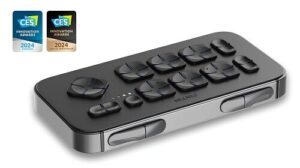 Created by ONECOM, an innovator in mobile text technologies, the FINTIN V1 is a handheld device that makes the QWERTY keyboard accessible for people who are blind. Utilizing just six keys, the device uses vibrations and tactile sensations to process up to 36 keyboard inputs, allowing those with visual impairments to use the most common communication method across technologies. The device opens opportunities for those with visual impairments to more readily utilize desktop keyboards in the workplace and creates a pathway to accessible gaming, mobile devices and computers. Photo: ONECOM
Created by ONECOM, an innovator in mobile text technologies, the FINTIN V1 is a handheld device that makes the QWERTY keyboard accessible for people who are blind. Utilizing just six keys, the device uses vibrations and tactile sensations to process up to 36 keyboard inputs, allowing those with visual impairments to use the most common communication method across technologies. The device opens opportunities for those with visual impairments to more readily utilize desktop keyboards in the workplace and creates a pathway to accessible gaming, mobile devices and computers. Photo: ONECOM
PROTEOR: A Different Kind of Prosthetic
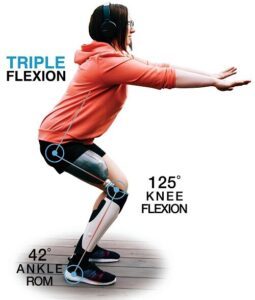 Seeing success in the European markets, a new kind of prosthetic is finally coming to the United States. Designed by PROTEOR, the PDAC-verified SYNSYS microprocessor leg system is an advanced prosthetic that gives a more unrestricted range of motion, stability and a natural look to those wanting to utilize prosthetic limbs. Using hydraulic kinetic coupling, the prosthetic provides its users the capability to walk in a flatter-footed manner, allowing for activities like walking down stairs, squatting and bending down to be done with ease. The device is also scientifically designed to have better stability through its larger toe clearance, minimizing the risk of trips and falls. Users have praised the prosthetics’ variety of shoe options, stumble recovery technology, portability and battery life. Photo: PROTEOR
Seeing success in the European markets, a new kind of prosthetic is finally coming to the United States. Designed by PROTEOR, the PDAC-verified SYNSYS microprocessor leg system is an advanced prosthetic that gives a more unrestricted range of motion, stability and a natural look to those wanting to utilize prosthetic limbs. Using hydraulic kinetic coupling, the prosthetic provides its users the capability to walk in a flatter-footed manner, allowing for activities like walking down stairs, squatting and bending down to be done with ease. The device is also scientifically designed to have better stability through its larger toe clearance, minimizing the risk of trips and falls. Users have praised the prosthetics’ variety of shoe options, stumble recovery technology, portability and battery life. Photo: PROTEOR
URIS Device: Treatment for Parkinson’s Patients
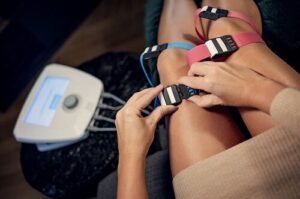 With Stimvia’s newest product, the URIS device, those diagnosed with Parkinson’s disease may soon have access to another form of treatment. In a 12-week study by Stimvia, patients underwent daily treatment sessions with a URIS device, producing electrical transcutaneous nerve modulation. After hitting the study’s halfway mark, patients stopped utilizing the device and reported improved symptoms and a reduction in tremoring after six additional weeks. While the URIS still needs to undergo more rigorous forms of evaluation, its initial results and immediate plans for investments are hopeful as an added form of treatment for those with Parkinson’s disease. Photo: PRNEWSFOTO/STIMVIA
With Stimvia’s newest product, the URIS device, those diagnosed with Parkinson’s disease may soon have access to another form of treatment. In a 12-week study by Stimvia, patients underwent daily treatment sessions with a URIS device, producing electrical transcutaneous nerve modulation. After hitting the study’s halfway mark, patients stopped utilizing the device and reported improved symptoms and a reduction in tremoring after six additional weeks. While the URIS still needs to undergo more rigorous forms of evaluation, its initial results and immediate plans for investments are hopeful as an added form of treatment for those with Parkinson’s disease. Photo: PRNEWSFOTO/STIMVIA
NIIRA Smart Glasses: Accessible Eyewear
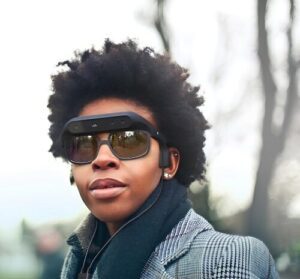 Created by the assistive technology company, Sensotec, and spatial audio solutions pioneer Eyesynth; the NIIRA smart glasses are designed to help people who are blind or have visual impairments to explore the world more accessibly. These lightweight glasses utilize AI to convert visual information into auditory cues that help them read the shapes, spaces and depth perception information around them. Any potential hazards around them are notified via audio cue to the wearer preventing them from falls or injury. Unlike other glasses of its kind, the NIIRA smart glasses are designed with a long-lasting battery and comfortable shape. Photo: SENSOTEC
Created by the assistive technology company, Sensotec, and spatial audio solutions pioneer Eyesynth; the NIIRA smart glasses are designed to help people who are blind or have visual impairments to explore the world more accessibly. These lightweight glasses utilize AI to convert visual information into auditory cues that help them read the shapes, spaces and depth perception information around them. Any potential hazards around them are notified via audio cue to the wearer preventing them from falls or injury. Unlike other glasses of its kind, the NIIRA smart glasses are designed with a long-lasting battery and comfortable shape. Photo: SENSOTEC
Read more articles for the STEM Community here.
This article was originally published on diversitycomm.net.

